Intel Core i7-11700K Review: Blasting Off with Rocket Lake
by Dr. Ian Cutress on March 5, 2021 4:30 PM EST- Posted in
- CPUs
- Intel
- 14nm
- Xe-LP
- Rocket Lake
- Cypress Cove
- i7-11700K
CPU Tests: Office and Science
Our previous set of ‘office’ benchmarks have often been a mix of science and synthetics, so this time we wanted to keep our office section purely on real world performance.
Agisoft Photoscan 1.3.3: link
The concept of Photoscan is about translating many 2D images into a 3D model - so the more detailed the images, and the more you have, the better the final 3D model in both spatial accuracy and texturing accuracy. The algorithm has four stages, with some parts of the stages being single-threaded and others multi-threaded, along with some cache/memory dependency in there as well. For some of the more variable threaded workload, features such as Speed Shift and XFR will be able to take advantage of CPU stalls or downtime, giving sizeable speedups on newer microarchitectures.
For the update to version 1.3.3, the Agisoft software now supports command line operation. Agisoft provided us with a set of new images for this version of the test, and a python script to run it. We’ve modified the script slightly by changing some quality settings for the sake of the benchmark suite length, as well as adjusting how the final timing data is recorded. The python script dumps the results file in the format of our choosing. For our test we obtain the time for each stage of the benchmark, as well as the overall time.

There is a small performance gain here in the real world test across the three generations of Intel processors, however it is still a step away from AMD.
Application Opening: GIMP 2.10.18
First up is a test using a monstrous multi-layered xcf file to load GIMP. While the file is only a single ‘image’, it has so many high-quality layers embedded it was taking north of 15 seconds to open and to gain control on the mid-range notebook I was using at the time.
What we test here is the first run - normally on the first time a user loads the GIMP package from a fresh install, the system has to configure a few dozen files that remain optimized on subsequent opening. For our test we delete those configured optimized files in order to force a ‘fresh load’ each time the software in run. As it turns out, GIMP does optimizations for every CPU thread in the system, which requires that higher thread-count processors take a lot longer to run.
We measure the time taken from calling the software to be opened, and until the software hands itself back over to the OS for user control. The test is repeated for a minimum of ten minutes or at least 15 loops, whichever comes first, with the first three results discarded.
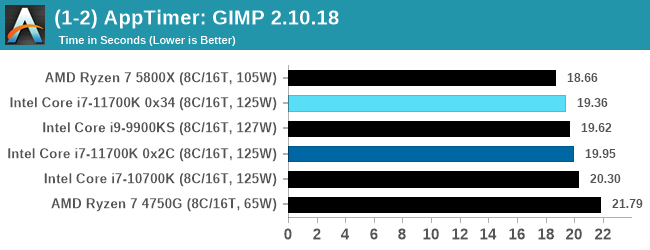
The app initialization test here favors single core performance, and AMD wins despite the lower single thread frequency. The 9900KS has a slight advantage, being a guaranteed 5.0 GHz, but none of the improved IPC from the Cypress Cove seems to come into play here.
Science
In this version of our test suite, all the science focused tests that aren’t ‘simulation’ work are now in our science section. This includes Brownian Motion, calculating digits of Pi, molecular dynamics, and for the first time, we’re trialing an artificial intelligence benchmark, both inference and training, that works under Windows using python and TensorFlow. Where possible these benchmarks have been optimized with the latest in vector instructions, except for the AI test – we were told that while it uses Intel’s Math Kernel Libraries, they’re optimized more for Linux than for Windows, and so it gives an interesting result when unoptimized software is used.
3D Particle Movement v2.1: Non-AVX and AVX2/AVX512
This is the latest version of this benchmark designed to simulate semi-optimized scientific algorithms taken directly from my doctorate thesis. This involves randomly moving particles in a 3D space using a set of algorithms that define random movement. Version 2.1 improves over 2.0 by passing the main particle structs by reference rather than by value, and decreasing the amount of double->float->double recasts the compiler was adding in.
The initial version of v2.1 is a custom C++ binary of my own code, and flags are in place to allow for multiple loops of the code with a custom benchmark length. By default this version runs six times and outputs the average score to the console, which we capture with a redirection operator that writes to file.
For v2.1, we also have a fully optimized AVX2/AVX512 version, which uses intrinsics to get the best performance out of the software. This was done by a former Intel AVX-512 engineer who now works elsewhere. According to Jim Keller, there are only a couple dozen or so people who understand how to extract the best performance out of a CPU, and this guy is one of them. To keep things honest, AMD also has a copy of the code, but has not proposed any changes.
The 3DPM test is set to output millions of movements per second, rather than time to complete a fixed number of movements.
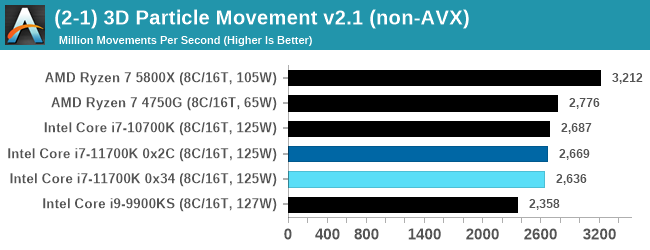
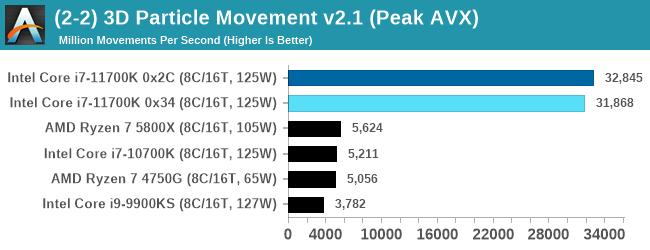
When AVX-512 comes to play, every-one else goes home. Easiest and clearest win for Intel.
y-Cruncher 0.78.9506: www.numberworld.org/y-cruncher
If you ask anyone what sort of computer holds the world record for calculating the most digits of pi, I can guarantee that a good portion of those answers might point to some colossus super computer built into a mountain by a super-villain. Fortunately nothing could be further from the truth – the computer with the record is a quad socket Ivy Bridge server with 300 TB of storage. The software that was run to get that was y-cruncher.
Built by Alex Yee over the last part of a decade and some more, y-Cruncher is the software of choice for calculating billions and trillions of digits of the most popular mathematical constants. The software has held the world record for Pi since August 2010, and has broken the record a total of 7 times since. It also holds records for e, the Golden Ratio, and others. According to Alex, the program runs around 500,000 lines of code, and he has multiple binaries each optimized for different families of processors, such as Zen, Ice Lake, Sky Lake, all the way back to Nehalem, using the latest SSE/AVX2/AVX512 instructions where they fit in, and then further optimized for how each core is built.
For our purposes, we’re calculating Pi, as it is more compute bound than memory bound. In ST and MT mode we calculate 250 million digits.
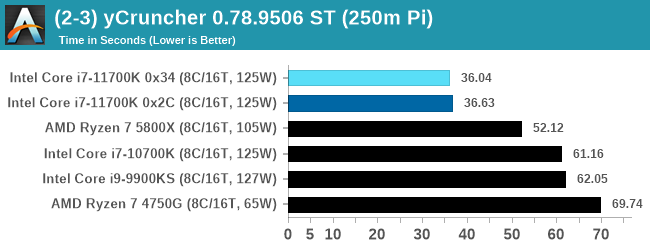
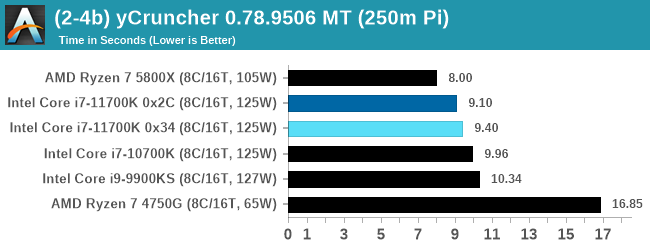
In ST mode, we are more dominated by the AVX-512 instructions, whereas in MT it becomes a mix of memory as well.
NAMD 2.13 (ApoA1): Molecular Dynamics
One of the popular science fields is modeling the dynamics of proteins. By looking at how the energy of active sites within a large protein structure over time, scientists behind the research can calculate required activation energies for potential interactions. This becomes very important in drug discovery. Molecular dynamics also plays a large role in protein folding, and in understanding what happens when proteins misfold, and what can be done to prevent it. Two of the most popular molecular dynamics packages in use today are NAMD and GROMACS.
NAMD, or Nanoscale Molecular Dynamics, has already been used in extensive Coronavirus research on the Frontier supercomputer. Typical simulations using the package are measured in how many nanoseconds per day can be calculated with the given hardware, and the ApoA1 protein (92,224 atoms) has been the standard model for molecular dynamics simulation.
Luckily the compute can home in on a typical ‘nanoseconds-per-day’ rate after only 60 seconds of simulation, however we stretch that out to 10 minutes to take a more sustained value, as by that time most turbo limits should be surpassed. The simulation itself works with 2 femtosecond timesteps. We use version 2.13 as this was the recommended version at the time of integrating this benchmark into our suite. The latest nightly builds we’re aware have started to enable support for AVX-512, however due to consistency in our benchmark suite, we are retaining with 2.13. Other software that we test with has AVX-512 acceleration.
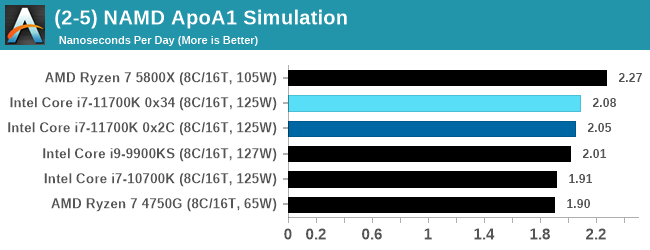
The 11700K shows some improvement over the previous generations of Intel, however it does sit much in the middle of the APU and the Zen 3.
AI Benchmark 0.1.2 using TensorFlow: Link
Finding an appropriate artificial intelligence benchmark for Windows has been a holy grail of mine for quite a while. The problem is that AI is such a fast moving, fast paced word that whatever I compute this quarter will no longer be relevant in the next, and one of the key metrics in this benchmarking suite is being able to keep data over a long period of time. We’ve had AI benchmarks on smartphones for a while, given that smartphones are a better target for AI workloads, but it also makes some sense that everything on PC is geared towards Linux as well.
Thankfully however, the good folks over at ETH Zurich in Switzerland have converted their smartphone AI benchmark into something that’s useable in Windows. It uses TensorFlow, and for our benchmark purposes we’ve locked our testing down to TensorFlow 2.10, AI Benchmark 0.1.2, while using Python 3.7.6.
The benchmark runs through 19 different networks including MobileNet-V2, ResNet-V2, VGG-19 Super-Res, NVIDIA-SPADE, PSPNet, DeepLab, Pixel-RNN, and GNMT-Translation. All the tests probe both the inference and the training at various input sizes and batch sizes, except the translation that only does inference. It measures the time taken to do a given amount of work, and spits out a value at the end.
There is one big caveat for all of this, however. Speaking with the folks over at ETH, they use Intel’s Math Kernel Libraries (MKL) for Windows, and they’re seeing some incredible drawbacks. I was told that MKL for Windows doesn’t play well with multiple threads, and as a result any Windows results are going to perform a lot worse than Linux results. On top of that, after a given number of threads (~16), MKL kind of gives up and performance drops of quite substantially.
So why test it at all? Firstly, because we need an AI benchmark, and a bad one is still better than not having one at all. Secondly, if MKL on Windows is the problem, then by publicizing the test, it might just put a boot somewhere for MKL to get fixed. To that end, we’ll stay with the benchmark as long as it remains feasible.
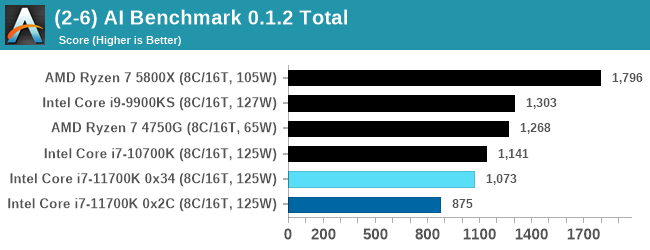
Every generation of Intel seems to regress with AI Benchmark, most likely due to MKL issues. I have previously identified the issue for Intel, however I have not heard of any progress to date.


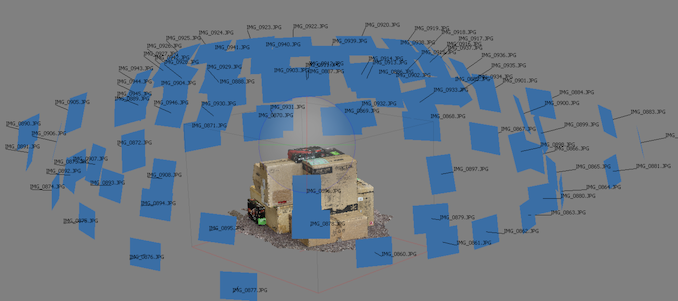
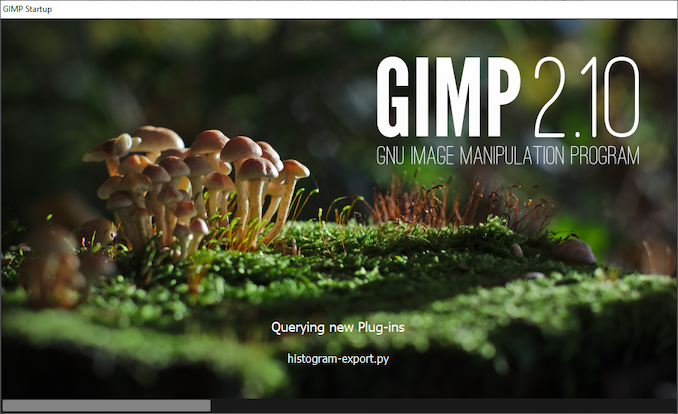
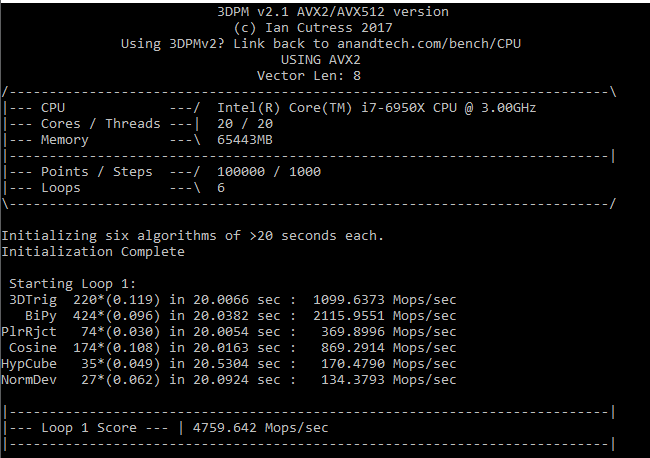
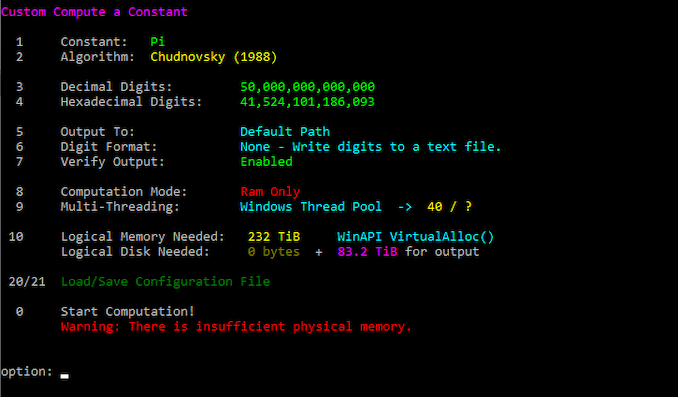
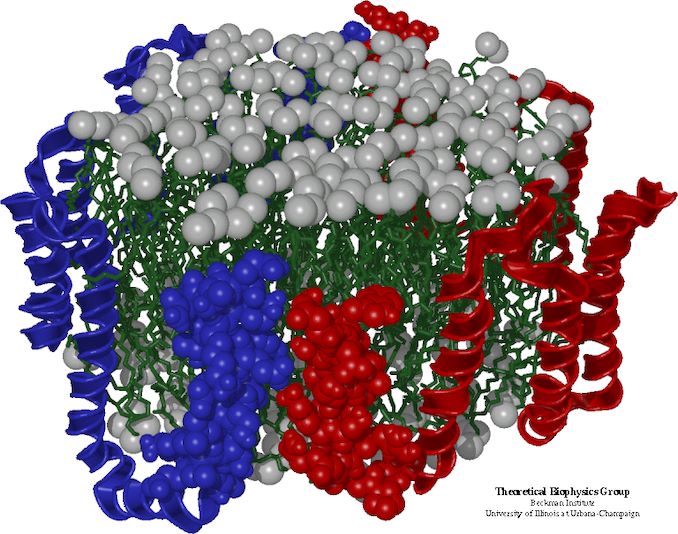









541 Comments
View All Comments
CiccioB - Friday, March 5, 2021 - link
I would like to know what you will say if Anantech will do the same with AMD Ryzen 4, that is reviewing it on an early motherboard with a beta BIOS and not yet tuned microcode and it will result not being as fast as you would expect (or hoped it to be) one month head of the actual release date.And present it as an official review of the product.
I would bet you (and your "friends") would go and cry out for a payed article by Intel to make AMD product look worse that it really is "like the good old times when it payed everywhere on Earth to not make AMD sell its products".
supdawgwtfd - Friday, March 5, 2021 - link
Except it appears the CPU is operating at advertised performance levels...It provides +19% improved performance for some things but not others.
the_eraser1 - Friday, March 5, 2021 - link
It would actually be fine because Zen 4 is already showing 30% performance uplift clock-for-clock, and that's a full year ahead of launch.Be honest with yourself. Achieving even a 5% uplift with microcode optimizations ahead of launch is a pipe dream. The review successfully shows the kind of performance you would expect. Is there room for improvement over time? Of course, but that applies to any product.
CiccioB - Friday, March 5, 2021 - link
I'm not speaking about the improvements in IPC. IPC is not everything to evaluate a product. If that were true ARM chip would be the winner since early '90s.I'm speaking about the fact that in many tests shwn here this architecture shows worse results than the previous one. That would mean there's something really broken in the architecture or in the SW they execute.
About Zen 4, don't old your breath because 5nm for HP are not that close. Even Intel Ocean Cove is said to be the really new revolutionary architecture that is finally going to show what the new 7nm PP could have really brought if it was available today as we speak.
These are speculations, while this chip will be out in less than a month and waiting for the final tuning would have just made a better service to anyone that really wants to know how really it behaves. Not how it looks like on a unknown motherboard with a not updated BIOS and not the final (or even the first version) of the microcode.
the_eraser1 - Friday, March 5, 2021 - link
This performance from RKL is unsurprising if you had been paying attention. We've known for months that Intel hasn't had great results with RKL and that's why they're pushing for Alder Lake ASAP.Once again, you cannot honestly expect substantial performance uplifts a month before launch. It's possible the ring/uncore frequency was low for this review, however that will only make a significant difference in games, or other latency sensitive scenarios.
As for Zen 4, I know for fact from reputable sources that it's coming around the middle of 2022, with large uplifts in performance.
Qasar - Saturday, March 6, 2021 - link
" I'm speaking about the fact that in many tests shwn here this architecture shows worse results than the previous one. That would mean there's something really broken in the architecture or in the SW they execute. " no your crying cause intel still lost. and that well. rocket lake, isnt the performer it was made out to be. AND it looks like some of the performance regressions, were explained/accounted for, in the review, which you obviously did not readOtritus - Saturday, March 6, 2021 - link
Originally ocean cove was leaked to be a revolutionary architecture with a massive ipc uplift that can serve as the backbone for future architectures like Conroe did in the original Core2 line. Leaks have later said that Intel cancelled the revolutionary nature of the product and ocean cove is simply going to be another microarchitecture like sunny or golden cove. By that point AMD should have zen 5 and we the consumer can enjoy healthy competition.As to the point on how it really behaves. We can see from the frequency graphs that rocket lake is turbo boosting as it should. A new BIOS could change power limits which would change behavior, but when rocket lake is already given infinite turbo time, such changes are likely to lead to performance regressions. The only other possibility is that the slight maturation of the bios leads to a small performance uplift. This WOULD BE IPC, but such improvement would be small at best given that z590 (and the similar sunny cove) has been out for a while. At best gaming performance may not suck as hard (or be fixed), but overall the performance improvements should be less than 5%. Not enough to change any conclusion.
My only gripe is the usage of "review" over something that indicates it's a pre-release product. However, given that Intel themselves didn't have any comments on the article, the final performance is likely to be so similar that this is basically the review of the final-release product.
Spunjji - Saturday, March 6, 2021 - link
They've already done that with a bunch of AMD products - like the OEM-only 4000 series APU and the weird Xbox One S APU desktop board.Speaking as a tech enthusiast, if they get hold of Zen 4 before release and can do a preview that doesn't break NDA, I would be over the moon. I love to get an idea of how a release will shape up, as long as there are caveats that it may not be final performance - which is exactly what we got here.
Timoo - Monday, March 8, 2021 - link
I'd Lóve it!Beta BIOS might be a slight disadvantage, but we've seen it with the release of ZEN1. At the time everyone blamed the BIOS for memory compatibility, etc. etc. etc.
In the end, not much improvement was found, once stable BIOSes were out. Bugs were fixed, but ZEN1 was still not beating Intel.
TheinsanegamerN - Monday, March 8, 2021 - link
It would still match the expected out of box performance. Stop being so salty over Intel sucking the big one, RKL is a total dud performance wise, a microcode tweak is not going to increase IPC. It already boosts to where it should be and draws LMFAO power.